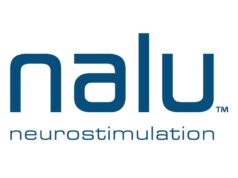
The results of the HALO (High and low frequency options) study, which are published online in the scientific journal Neuromodulation: Technology at the Neural Interface, indicate that “major energy savings” are possible in the administration of subperception spinal cord stimulation (SCS) to treat chronic pain.
In the study, a number of different frequencies, from 1kHz down to 10Hz, were used to deliver subperception relief for back, leg, and overall pain—with all tested frequencies providing effective and sustained pain reduction out to one year, and 85% of patients reporting a preference for SCS delivered at lower frequencies of 400Hz or less.
“Effective subperception pain relief was achieved in SCS at sub‐kHz frequencies, down to 10Hz, using a novel electric field shaped to preferentially modulate the dorsal horn,” Simon Thomson (Basildon and Thurrock University Hospitals, Basildon, UK) et al write in their report. “Following the neural dosing curves reported in our study, our field configuration enabled effective targeting and a significant increase in efficiency.
“These findings will enable effective and energy‐efficient therapy, as well as personalised stimulation dosing across patients and over time. Finally, these results provide insights useful in the search for mechanisms of action, and guidance on requirements for useful comparison of subperception settings in clinical and preclinical experiments.”
Despite the use of subperception SCS most commonly being associated with waveforms that require high energy, the necessity of these waveforms for effective subperception pain relief has not been established, according to Thomson et al. The researchers therefore intended to explore whether effective subperception pain relief can be achieved using frequencies of less than 1kHz.
They enrolled 30 chronic pain patients diagnosed with failed back surgery syndrome (n=29), or chronic radiculopathy (n=1), causing chronic neuropathic pain of the low back and lower limbs, who had subsequently been implanted with an SCS system (Precision Spectra/Spectra WaveWriter, Boston Scientific), in a multicentre, consecutive, observational case series. The mean age in this patient cohort was 54 years (range=35–74), and 22 of the 30 participants were female.
An effective stimulation location, or ‘sweet spot’, was determined using a novel electric field shape designed to preferentially modulate dorsal horn elements at a frequency of 1kHz. Following this search, the patients were provided with a set of programmes with select sub‐kHz frequencies—600, 400, 200, 100, 50, and 10Hz—over three-to-four consecutive visits, in order to improve power usage and explore the role of frequency in subperception. All of these programmes used the same field identified in the sweet spot search at 1kHz, and each frequency was amplitude adjusted and provided with titration to enable optimisation of the neural dose.
All 30 patients underwent frequency titration for a mean period of six months. The mean numerical rating scale (NRS) scores for back pain decreased from a baseline of 8.2±0.2 to 3.1±0.2 with 1kHz, 2.5±0.3 with 200Hz, and 3.1±0.2 with 10Hz, yielding a mean of 67% back pain relief across all frequencies. And, while 200Hz provided the largest back pain reduction (71%), Thomson et al note that “importantly, the null hypothesis that pain scores were different at the different frequencies was rejected, indicating that all frequencies provided equivalent back pain relief”. The authors add that similar results were seen for leg and overall pain relief, with 200Hz providing the largest pain reduction of any frequency—but not to a statistically-significant extent.
Thomson et al also state that, regarding optimisation of the neural dose, adjustment of the pulse‐width was required to be able to achieve effective and equivalent pain relief across the different frequencies. “It was observed that, as frequency was decreased, increasing the pulse‐width in a nonlinear fashion enabled the pain relief to be maintained,” they add. Therapeutic amplitude, on the other hand, was observed to be “relatively constant” across frequencies following the described pulse‐width adjustments, and as such no significant association was found between subperception therapeutic amplitude and frequency.
Charge‐per‐second was found to significantly decrease as frequency was decreased, dropping from 326±145μC/s at 1kHz to 108±42μC/s at 200Hz, and 9±3μC/s at 10Hz—thus providing the potential for a “large energy saving” by decreasing frequency. Compared to 1kHz, efficiency increased by 74% at 200Hz and by 97% at 10Hz in the trial. According to the study’s authors, patients generally reported preferences for a range of different frequency options, indicating that no particular frequency was best for all patients, and effective pain relief was sustained at long‐term follow‐up (mean of one year from the beginning of frequency titration, and two years from SCS implantation), with a mean pain reduction of 62% in overall (NRS=3.10), 60% in back (NRS=3.18), and 73% in leg (NRS=2.82) pain compared to baseline.
“These data support the idea that effective subperception therapy is not achieved by the optimisation of any single parameter—for example, a single outperforming frequency or waveform—but rather that there is a family of effective parameter combinations, and any given frequency can be effective if targeting is appropriate and the other stimulation parameters are adequately adjusted,” Thomson et al write. “Furthermore, the present observations at low frequency challenge our current mechanistic thinking and the notion that high frequency and/or high energy stimulation is required for effective subperception SCS.”
They also assert that the HALO study’s present results, combined with those of the PROCO randomised controlled trial, which assessed the effects of rate on analgesia in kHz-frequency SCS and was published in Neuromodulation: Technology at the Neural Interface in 2018, “have enabled us to derive a set of parameter combinations that result in effective subperception therapy across a broad range of frequency in SCS, from 10–10,000Hz”.
“These derived rules of neural dosing can be considered a first step in a unified framework for dosing stimulation in SCS,” Thomson et al add. “In support of this notion is the fact that parameter settings that others have shown to be effective could be represented as single points on the neural dosing curves of the present model. Having the understanding and ability to use multiple effective stimulation doses, instead of working with a single modality, may help practitioners manage the large variability that exists in SCS—both between subjects due to differences in physiology, disease aetiology, lead type and placement, and within subjects due to disease progression and accommodation to chronic stimuli. In contrast, committing to a single waveform, despite being simpler, does not allow patients to reduce charging, explore their response with other doses, or change dose over time, and may increase the likelihood of explantation.”
The study’s authors also conclude that future work may include expanding the present neural dosing model to include other dimensions that potentially impact electrical dosing in SCS, such as cycling and other temporal parameters, stimulation location and field shape, and wash‐in/wash‐out time. In addition, they note that the replication of these observations in other samples as well as the longer-term follow‐up of these patients to evaluate whether there is potential to prevent habituation effects using these lower doses, and to explore the use of modulation of frequency and neural dosing over time, may be of interest too.













